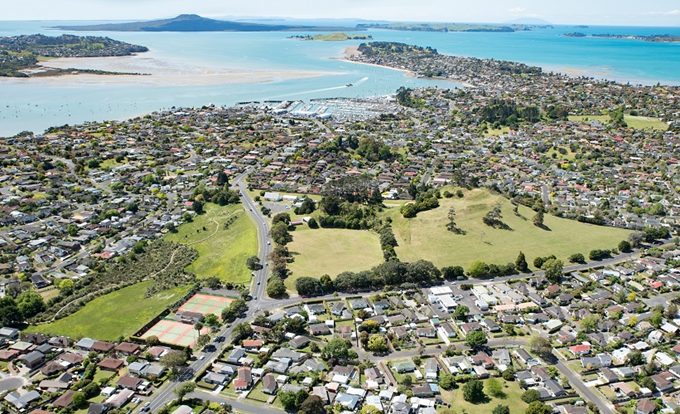Work starts this month on a programme to restore native vegetation and habitat for native wildlife on Ōhuiarangi / Pigeon Mountain in Half Moon Bay.
Around 112 exotic trees, including pest species, will be removed and over 30,000 new native shrubs and trees will be planted in selected locations.
No existing native, scheduled or protected trees will be removed.
The maunga became known as Pigeon Mountain in early European times for the numerous Kereru or native pigeon that lived on the maunga, and the planting programme will include tree and plant species that are hoped will encourage Kereru back to the maunga in the future.
Timings
From 8 April, arborists will begin the tree removal which is expected to take around twenty days to complete. From May to August this year 500 native shrubs will be planted on the tihi (summit) terraces and another 1200 native shrubs and trees around the quarry slope areas of the maunga.
Some of the 30,000 new native shrubs and trees being added around the wetland ecological area on the western side of Pigeon Mountain Road will be planted this Autumn, and the remaining over 2020-2021.

The maunga will remain open to visitors throughout the works but people are asked to avoid areas where arborists are working. For three days in mid-April, the maunga will be completely closed while a helicopter is assisting tree removals. Signage explaining the project and temporary closures will be at entrance points.
Long-term benefits
Paul Majurey, Chair of the Tūpuna Maunga Authority says that re-establishing indigenous flora and fauna and restoring the authenticity of the historic maunga sites across Tāmaki Makaurau is a long-term goal.
“Native vegetation is one of the natural features of the maunga that has diminished over many decades, replaced by an increasing number of exotic species. This programme of work will have important long-term ecological benefits for the maunga.”
Ōhuiarangi has suffered significantly in other ways, with literally half of the maunga quarried away between the 1950s and 1970s. But despite this destruction, some of the original Māori pā (fortified settlement) has survived in the form of historic pā terraces and midden (historic shell deposits).
“This restoration is very much about restoring what we can of the original ecology while also giving prominence to and maintaining historic features,” says Majurey.
The new plantings will be carefully positioned to enhance sight lines to and from the tihi (summit). Terrace planting will take a non-dig approach to avoid ground disturbance; native low-growing pōhuehue plants will be positioned on the terrace surface in cotton bags through which root systems can establish in the soil.
More information about the Tūpuna Maunga Authority, including the Tūpuna Maunga Integrated Management Plan, can be found at www.maunga.nz.


